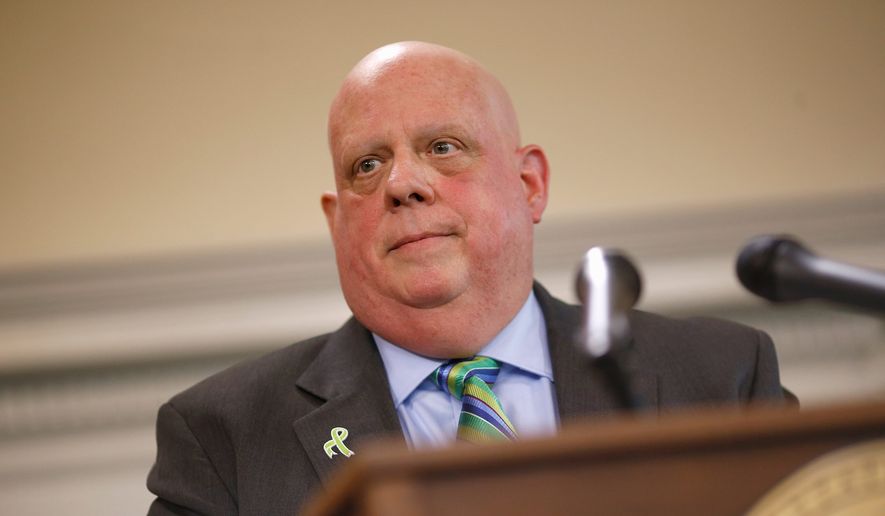ANNAPOLIS — Tensions ran high Wednesday in the Board of Public Works meeting as Gov. Larry Hogan called out Baltimore officials for failing to install air conditioners in schools, saying it is unacceptable to leave students sweltering in summer.
Nearly a third of schools in Baltimore County and the city lack air conditioning, but officials said they haven’t been able to install units because of a Public Works rule preventing spending on such construction.
The Board of Public Works — a three-member panel made up of the governor, Comptroller Peter V. Franchot and Treasurer Nancy K. Kopp — unanimously voted to change the rule Wednesday at a bimonthly meeting, aiming to give city and county officials no excuses for delay.
“Twenty-two of the jurisdictions in the state have solved the problem of air conditioning,” said Mr. Hogan, a Republican. “Two have not — Baltimore city and Baltimore County. And that is unacceptable.”
Mr. Franchot, a Democrat who has pushed for Baltimore schools to install portable, window-mounted air conditioners, heralded the policy change.
“This is our Flint,” said Mr. Franchot, comparing Baltimore’s situation to the lead-contaminated water in Flint, Michigan.
The board considered the air conditioning funding as part of the annual “beg-a-thon,” in which school officials ask for increased construction money to their districts in the state budget.
Jim Melia, a technology teacher at Lansdowne High School in Baltimore County, said classrooms become sweltering and ramps are not available for students in wheelchairs. He said he has requested funding from the school district and that he would be happy to teach out on the lawn rather than in miserable classroom conditions but that shouldn’t be necessary. He said the county’s reply was a “jibber-jabber runaround.”
Baltimore County Council member Wade Kach, a former teacher, said more classes are being held during the summer because the school year starts earlier in August and ends in late June.
“Coming from a teacher, I don’t care how good the kids are,” he said. “They can’t learn after a while. It just ends.”
The board’s rule change still needs approval of the General Assembly’s Joint Committee on Administrative, Executive and Legislative Review.
But Mr. Hogan and Mr. Franchot said they expect school officials to move quickly and demanded to know how long it would take to start installing portable units in 48 county schools and 76 city schools.
Ms. Kopp, a Democrat, nonetheless said she is worried about the state’s intervention. She said she fears a slippery slope of making school construction a political football rather than leaving it to districts to handle.
She said her vote was intended to be seen as permissive, clearing the way for schools to spend construction money but not mandating that they do so.
Gregory Thornton, CEO of Baltimore schools, estimated the cost of installing portable air conditioners to be about $17 million.
The city prefers central air conditioning, which is more efficient and lasts longer, said J. Keith Scroggins, chief operating officer of Baltimore schools.
S. Dallas Dance, superintendent of Baltimore County Public Schools, said it would cost $8 million to $10 million to install air conditioners. But he said that if the district needs to move forward now, it would take money from other construction projects unless the state comes forward with more funding.
Mr. Dance said officials already are working to have central air conditioning in all schools by 2021.
“Kids sitting in hot classrooms until 2021 is not acceptable,” Mr. Hogan said, telling officials they have “got to come back with a new plan.”
• Anjali Shastry can be reached at ashastry@washingtontimes.com.




Please read our comment policy before commenting.